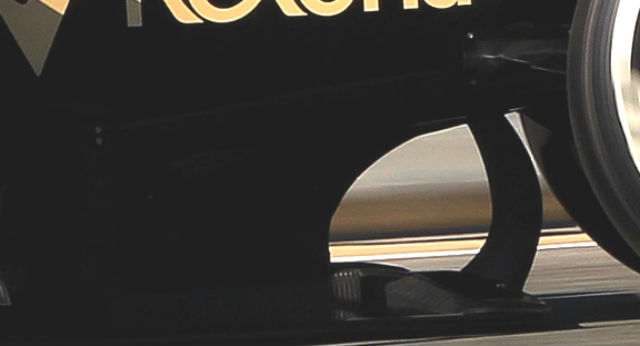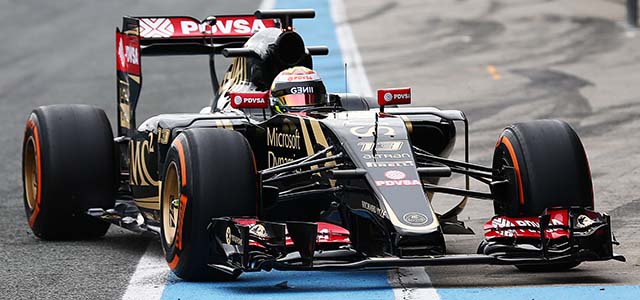
Matthew Carter, Lotus F1 Team CEO:
“The E23 Hybrid represents a new era for Lotus F1 Team, not only in the change to a Mercedes Benz Power Unit, but also it is the fruition of a busy winter behind the scenes. Improvements within our Design, Aero and Simulation departments have all contributed to the development of a car which is a huge step forward. As a team we are confident that the new car coupled with additions to the Race team will enable a huge leap forward and we are full of optimism going into the new season. It is time to put the disappointment of last season behind us and benefit from 12 months of hard work; we are ready to return to our rightful place at the pinnacle of the sport.”
Nick Chester, Lotus F1 Team Technical Director:
“The E23 Hybrid represents a massive step forward for us. It’s no secret that we struggled with last year’s car so we’ve targeted every area that caused us an issue. We’ve made strong progress in the wind tunnel as well as in areas such as packaging and cooling. We expect the E23 to perform far, far better than its predecessor. In terms of what’s new, obviously a massive change for us is a new Power Unit supplier. We made this change as it looked and looks to be the one area of the car which could bring us the greatest performance gain. It’s not just performance, but reliability and driveability as well as packaging and cooling too. The E22 did deliver good figures in the wind tunnel, even if it was difficult to unlock its potential, so we’ve paid more attention to making the characteristics of the car more adaptable. In terms of the suspension, we were delivered something of a blow last year when the front-rear interconnected suspension was outlawed mid-season. The E23’s suspension design is specific to the updated regulations so we’re not trying to update a system originally intended to work a different way. We learnt a lot in many areas of the car over the course of 2014 so there are many lessons which have been applied. We know we’ve made a big step. We won’t know how our car will fare in relative terms until we’re out in action at a Grand Prix, but we certainly expect to be much more competitive than last year.”
Analysis
The Lotus E23 was a late arrival at Jerez, and many did not expect it to do much running. However the Mercedes powered car from Enstone quickly clocked up 25 laps of the Jerez circuit during its first morning of testing.
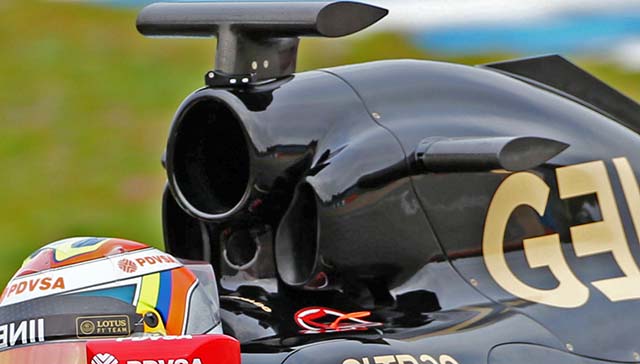
One of most noticeable features of the E23 is the roll hoop duct arrangement. Alongside and slightly below the conventional inlet for combustion air there are two extra ducts, the purpose of these has yet to become fully clear but it is likely that they feed a heat exchanger mounted toward the rear of the Mercedes power unit. A fourth much smaller duct sits directly behind the drivers helmet.

Overall the design of the E23 is very close in many areas to that of the E22. This is something that can be clearly seen by looking at the shape of the roll hoop, which appears identical on both cars. The front of the chassis is slightly lower on the E23. Compare the 2015 car (above) with the 2014 (below).
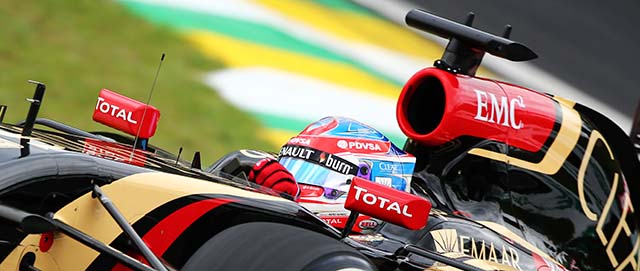
A look at the front brake ducts on the E23 (below), note the spacing between upper and lower wishbone and the angle of the suspension pushrod.
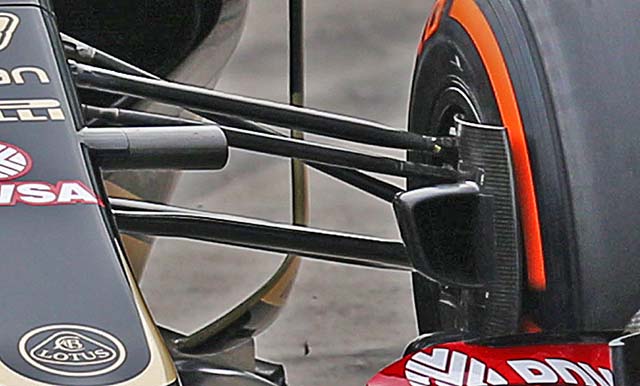
The front crash structure sits quite far back relative to the leading edge of the front wing, similar to that of the Mercedes W06 Hybrid.
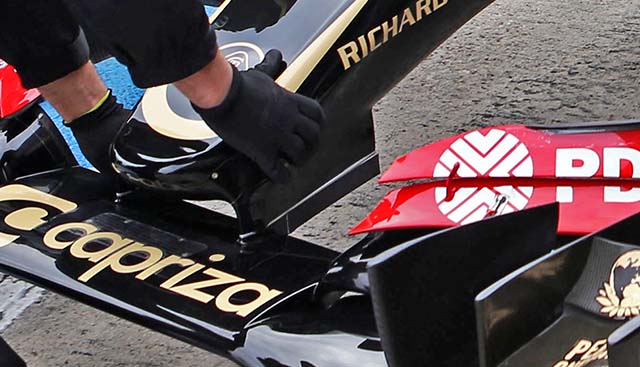
A bulge on the engine cover of the E23 is likely required due to the width of Mercedes reworked power unit. Note the strakes on the lower part of the rear wing end plate.
 The upper surface of the front of the car runs fairly straight to the front bulkhead then the nose slopes down relatively steeply.
The upper surface of the front of the car runs fairly straight to the front bulkhead then the nose slopes down relatively steeply.
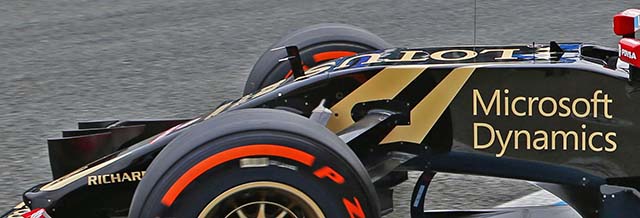
This maximises the area on the front bulkhead to house braking and suspension components. Note the small flick up at the tip of the nose

A look at the leading edge of the sidepod on the E23 (above), the general concept carries over from the E22 (below) but with a number of refinements to the pod-wing as well as what appears to be a marginally smaller cooling aperture.
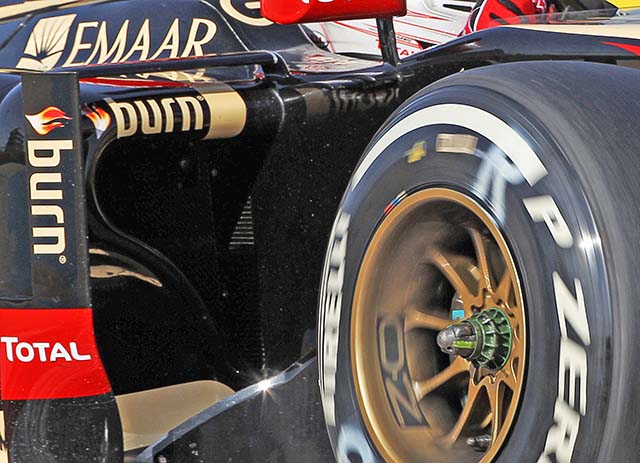
In many areas (other than the power unit installation) the E23 is an evolution of the E22, a symptom of the stable rules, and according to some a funding shortfall at the Enstone based team.

The front floor stay on the car (above) is very similar to the design used on the Lotus E21 (below).
